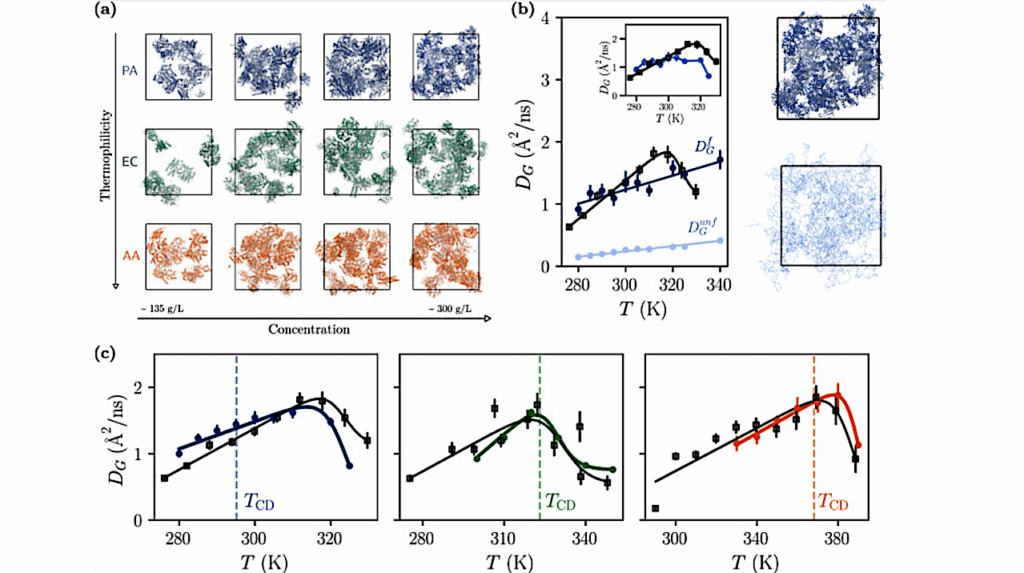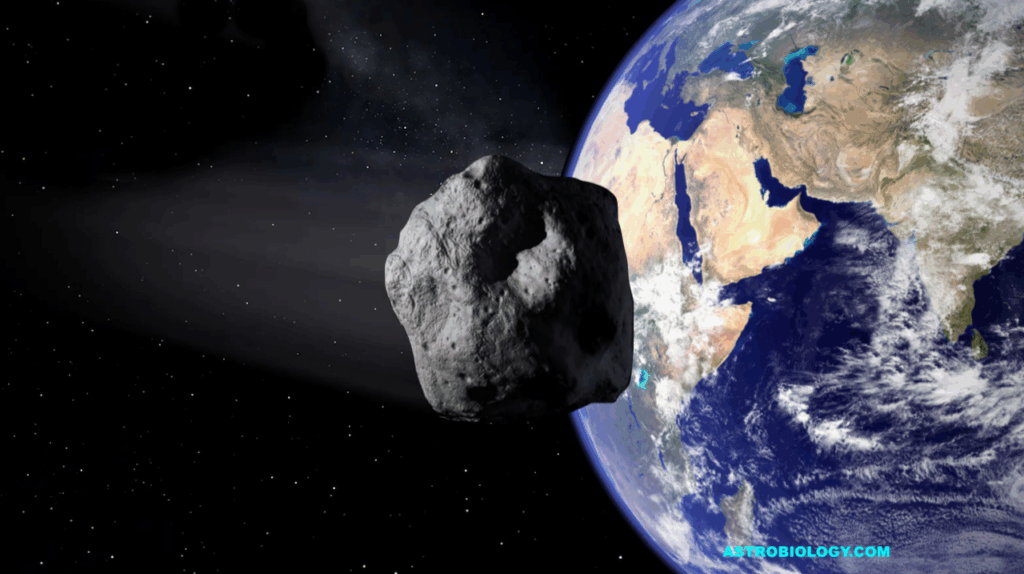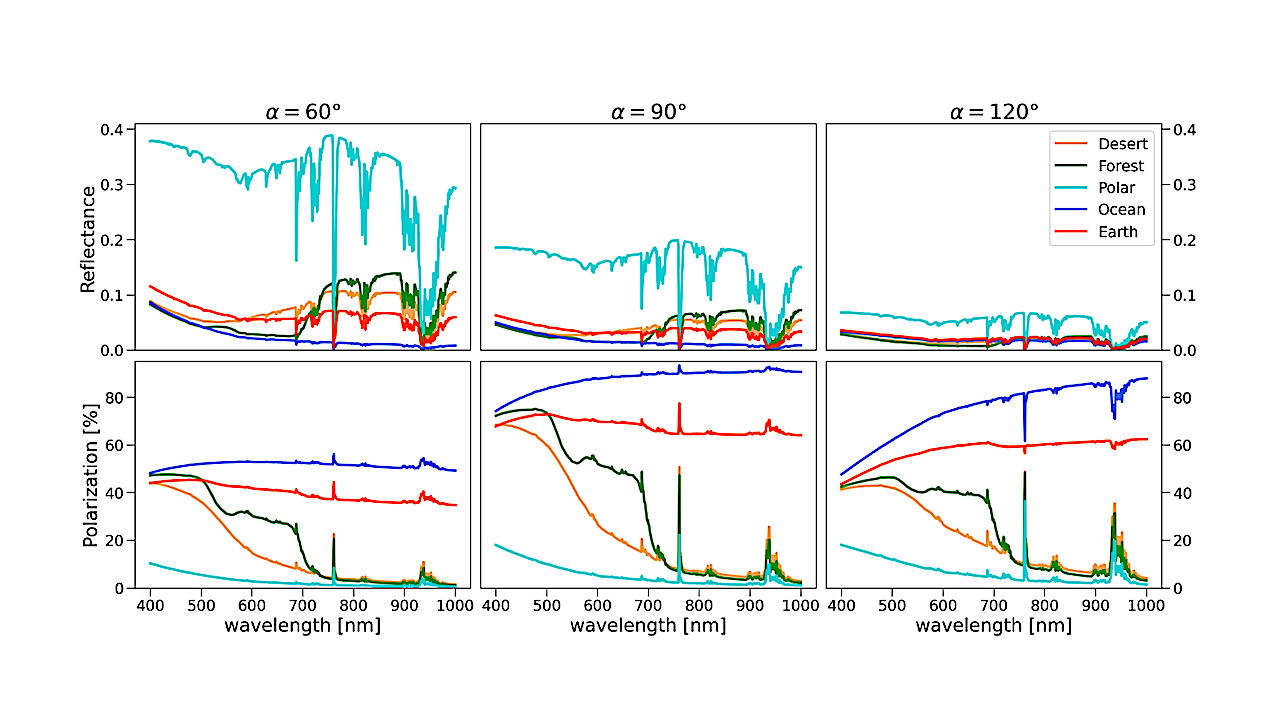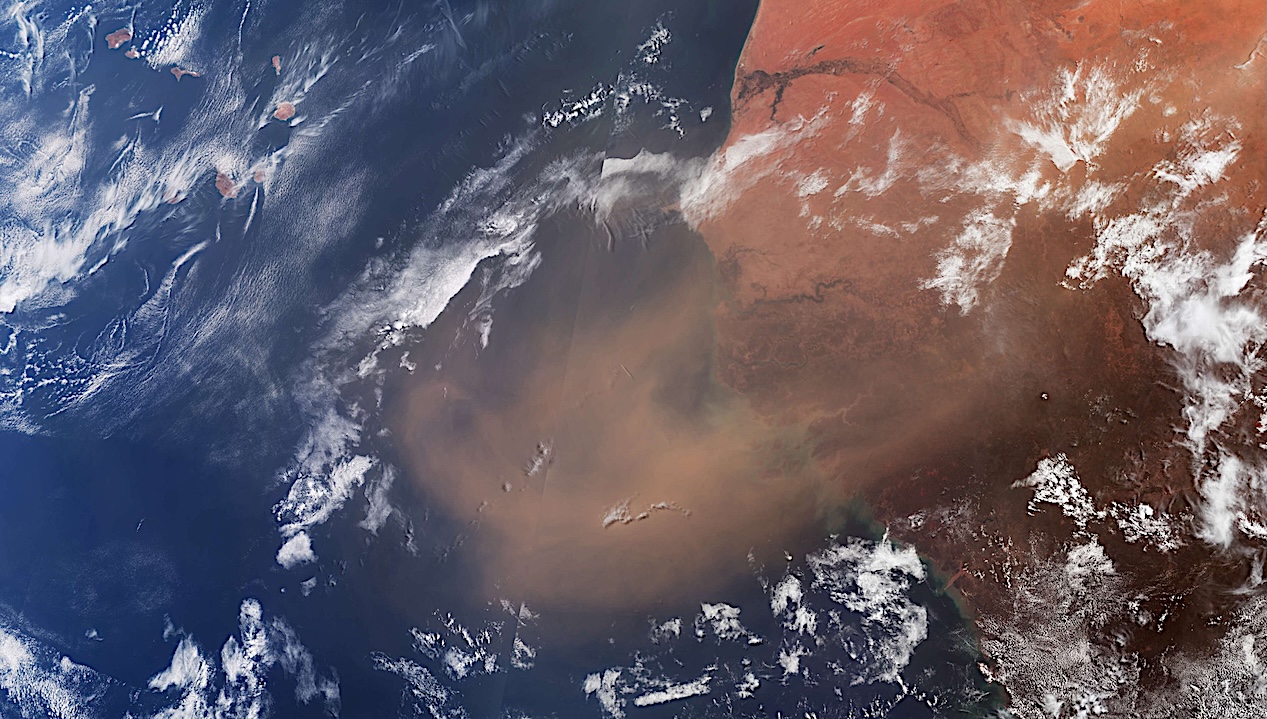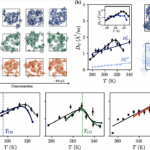Now Reading: Water Planet Dynamics: Darkening Of Earth’s Global Ocean
-
01
Water Planet Dynamics: Darkening Of Earth’s Global Ocean
Water Planet Dynamics: Darkening Of Earth’s Global Ocean
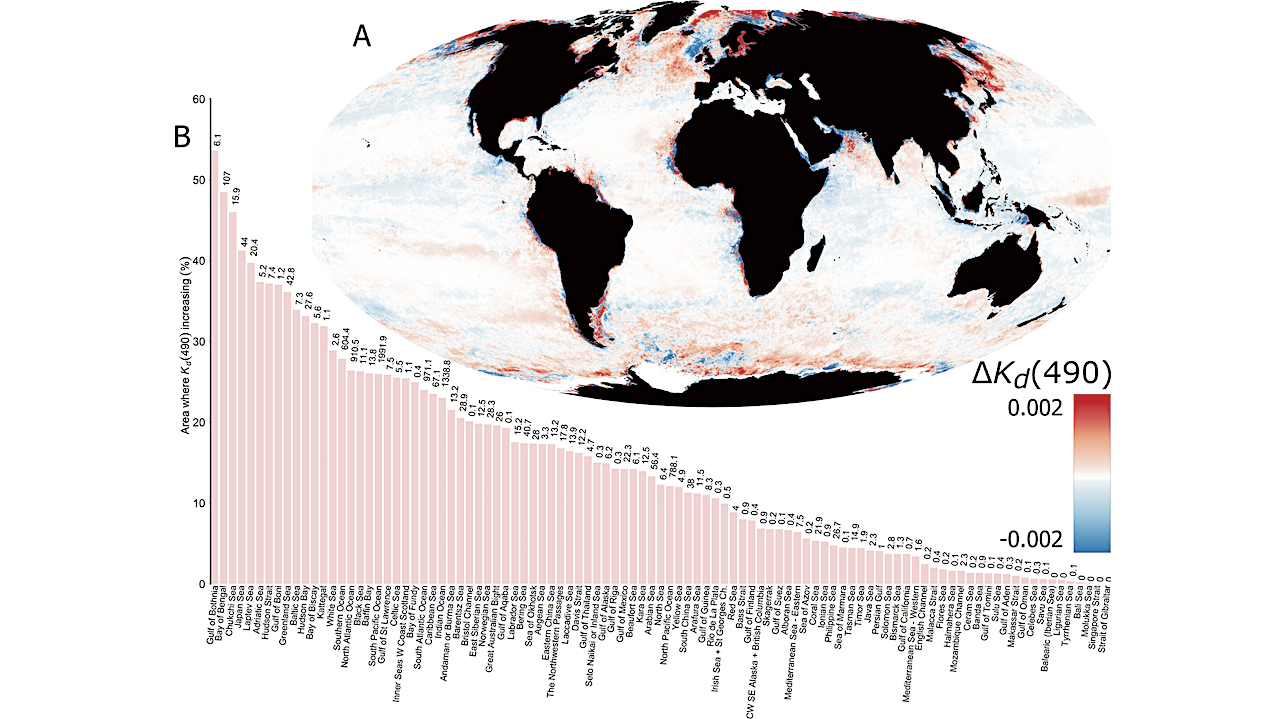

Darkening of the Global Ocean. (A) The rate change (units per year) in the diffuse attenuation coefficient for downwelling irradiance at 490 nm [ΔKd(490)] measured from MODIS Aqua between 2003 and 2022 in 9 km resolution (CRS: World Mollweide, ESRI:54009). Reds indicate regions where Kd(490) is increasing (oceans are getting darker), while blues indicate regions where Kd(490) is decreasing (oceans are getting lighter). White indicates regions where there was no statistically significant change in Kd(490) over the period 2003–2022. Values of ΔKd(490) were derived for each 9 km resolution pixel using quantile regression to the median performed on the fitted values of an Autoregressive Integrated Moving Average (ARIMA) model of annual averaged Kd(490) data. (B) International Hydrographic Office sea regions ranked according to the percentage of their area over which Kd(490) is increasing. Numbers inset above bars give the absolute area where Kd(490) is increasing in 10,000 km2. Raw data are presented in Table S4. Areas were calculated in CRS World Mercator (ESRI:54004). — Global Change Biology
The photic zones of the oceans—where sunlight and moonlight drive ecological interactions—are one of the most productive habitats on the planet and fundamental to the maintenance of healthy global biogeochemical cycles.
Ocean darkening occurs when changes in the optical properties of the oceans reduce the depth to which sufficient light penetrates to facilitate biological processes guided by sunlight and moonlight. We analysed a 9 km resolution annual time series of MODIS Aqua’s diffuse attenuation coefficient of light at 490 nm [Kd(490)] to quantify whether the oceans have darkened over the last 20 years and the impact of this on the depth of photic zones around the world.
Kd(490) increased across 75,341,181 km2 (21%) of the global ocean between 2003 and 2022, resulting in photic zone depths reducing by more than 50 m across 32,449,129 km2 (9%) by area. The depth of the photic zone has reduced by more than 10% across 32,446,942 km2 (9%) of the global ocean. Our analysis indicates that ocean darkening is not restricted to coastal regions, but affects large swathes of the open ocean.
A combination of nutrient, organic material and sediment loading near the coasts and changes in global ocean circulation are probable causes of increases in primary and secondary productivity that have reduced light penetration into surface waters. The implications of ocean darkening for marine ecology and the ecosystem services provided by the surface oceans are currently unknown but likely to be severe.
Darkening of the Global Ocean, Global Change Biology (open access)
Astrobiology, Oceanography,
Stay Informed With the Latest & Most Important News
-
 012024 in Review: Highlights from NASA in Silicon Valley
012024 in Review: Highlights from NASA in Silicon Valley -
 02Panasonic Leica Summilux DG 15mm f/1.7 ASPH review
02Panasonic Leica Summilux DG 15mm f/1.7 ASPH review -
 03From Polymerization-Enabled Folding and Assembly to Chemical Evolution: Key Processes for Emergence of Functional Polymers in the Origin of Life
03From Polymerization-Enabled Folding and Assembly to Chemical Evolution: Key Processes for Emergence of Functional Polymers in the Origin of Life -
 04How New NASA, India Earth Satellite NISAR Will See Earth
04How New NASA, India Earth Satellite NISAR Will See Earth -
 05And Thus Begins A New Year For Life On Earth
05And Thus Begins A New Year For Life On Earth -
 06Astronomy Activation Ambassadors: A New Era
06Astronomy Activation Ambassadors: A New Era -
07SpaceX launch surge helps set new global launch record in 2024













